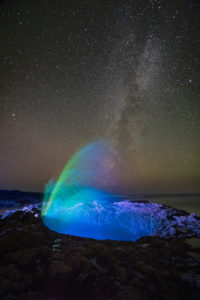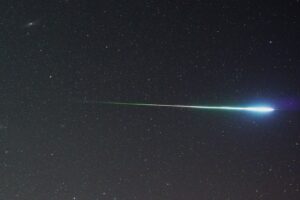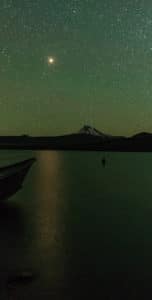Astro Photog Guide for July 2018
The following information is designed with the Astro-Landscape Photographer in mind. I looked around the web and didn’t find anything in a condensed form that I liked which was specific to the landscape photographer, so I made this list for myself.
Note: Local times may vary based on your location. All times given are in UTC, Universal Coordinated Time. If you’re unfamiliar with UTC, check out the excellent description at http://earthsky.org/astronomy-essentials/universal-time. Even with that information, it is sometimes confusing converting UTC times to your local time. To help with that, try http://www.timebie.com/std/utc.php for converting specific UTC times to your local time.
The Big Thing for July 2018
There is a Total Eclipse of the Moon this month. While it is not visible anywhere in North America, pretty much everywhere else on the planet will see it. And it shout be a good eclipse, as it will be the longest Total Lunar Eclipse of the 21st Century lasting about 103 minutes.
Milky Way Core (MWC) Visibility – 4th to 23rd
The Milky Way Core is visible world-wide nearly all night long during July, if the sky is dark enough to see it. The next deciding factor is the moon – if the moon is too bright or near the horizon, it washes out the sky giving poor MWC visibility. Interference from the moon does not change much with latitude.
Latitude 55 – Skies are not dark enough until the 9th through the 21st with less than 2 good visibility each night.
Latitude 50 – At the start of July, latitudes greater than 50° N will not have skies that are dark enough for good visibility this month due to the lack of true darkness.
Latitude 45 and South – the skies here have several hours of astronomical darkness. So any time the moon is not up, it’s going to be a good time for shooting the Milky Way.
Southern Hemisphere – the long nights of winter give the opportunity of many more hours of Milky Way visibility than the Northern Hemisphere. Enjoy them!
| July 1 | MWC not visible due to nearly full moon being up all night. |
| July 2-4 | Less than 2 hours of MWC visibility. |
| July 5-8 | Several hours of MWC visibility. Moon rising in the morning hours. |
| July 9-15 | Best time of the month! |
| July 16-18 | Several hours of MWC visibility. Moon setting in the evening hours. |
| July 19-21 | Less than 2 hours in Late Morning. |
| July 22-30 | MWC not visible without the moon being up. |
| July 31 | Less than 2 hours of MWC visibility. |
Moon
June starts with a waning moon, just a couple days past full, rising well after sunset. First half of the month will be moonless in the evening. It ends the month 17 days old, approaching last quarter.
Total Lunar Eclipse – June 27-28
There is a total Lunar Eclipse on the night of June 27-28 which is visible from Africa, Asia, Australia, and Europe. The entire eclipse is only visible from Africa and West Asia. Australia will see the eclipse as the moon sets on the 28th. The initial partial phase of the eclipse will be underway when the moon rises for Europe. The last stages of the eclipse will be visible in South America as the moon rises. No part of this eclipse is visible from North America.
The moon will be passing through the middle of the Earth’s shadow and since it’s will occur near apogee when the moon is more distant from the Earth than average, it is expected to be a good, deep eclipse. And totality will last approximately 103 minutes, which will also be the longest total lunar eclipse in the 21st century.
Lunar Phases
| 7/06 07:51 UTC | Third/Last Quarter | Waning Gibbous |
| 7/13 02:48 UTC | New Moon | |
| 7/20 19:52 UTC | First Quarter | Waxing Gibbous |
| 7/27 20:20 UTC | Full Moon | Total Lunar Eclipse |
| Traditional Moon Names for July | |
| Farmer’s Almanac:
Supposedly from “Native Americans” of the NE and Eastern USA |
Buck Moon to signify the time of year antlers appear on buck deer. |
| Anglo-Saxon | Hay Moon as it’s the time to harvest hay. |
Sun
| June 21 10:07 UT | June Solstice was last month, and the sun’s path is now moving southward toward the September Equinox. Days are getting shorter in the northern hemisphere and longer in the southern hemisphere. |
Planets
| Highlights of the Month | |
| 7/26-27 Mars at opposition – | Closest approach for this year is actually a couple days later on July 30-31.
Brightest of any time of this year. Its red color is very distinctive. It will be nearly twice as bright this month as it was during the last opposition in 2016. Telescopes: This is the best time to view and photograph Mars this year. Note that a dust storm on Mars has been reported in recent weeks, and a medium or larger sized telescope will be needed to see surface details. |
| Jupiter, Saturn, and Mars surround the Milky Way Core | This July offers an excellent chance to get three planets in proximity to the Milky Way Core (MWC). With Jupiter to the west, Mars to the east, and Saturn nearly dead center to the MWC, it’s a great opportunity photographically. |
| Planetary Roundup | |
| Mercury | Low in the western evening sky for July.
It will reach greatest elongation away from the sun on July 11-12 before heading back towards the sun. By July 17 Mercury has dimmed and is rapidly fading from view into the sun’s glare. |
| Venus | Brightest object in the night sky.
Setting early in the evening and getting lower each night. At the end of July, Venus sets shortly after sunset. |
| Mars | Close to the eastern horizon by the end of evening blue hour.
See “Highlights of the Month” above as Mars is in opposition this month. |
| Jupiter | Near the meridian in the southern sky (northern hemisphere) soon after sunset.
Third brightest after Venus and Mars. Slows to a stop on July 10-11 and begins retrograde motion, making it appear to move backwards relative to its position the night before. |
| Saturn | Just past opposition on June 27.
Rising just after the Milky Way Core through the entire month of July. Highest around midnight. Telescopes: The rings are still open at 26° and near its maximum tilt. |
| Uranus | Rising in the early morning hours. Opposition will be in October. |
| Neptune | High in the south during dawn. Opposition will be in September. |
| Pluto | If you don’t think it’s a planet, check out the photos from the New Horizons space probe.
It’s between Saturn and Mars. Only Magnitude 14 – you’ll need a big scope to see it. |
Conjunctions
Planetary
| None in July 2018 |
Lunar
Note – all time in UTC. Check your local times – it will make some difference at to where you are on the earth.
| Date – UTC | Objects | Deg
Separation |
Moon Age | Moon Phase | Comments |
| 7/1 01:48 UTC | Moon + Mars | 4° 46’ | 18 days | Gibbous Waning | Visible in Morning Sky
2 out of 5 |
| 7/14 22:04 UTC | Moon + Mercury | 2° 11’ | 1 days
|
Waxing Crescent | Very Low to the Horizon!
Hard to see. 4 out of 5 |
| 7/16 03:32 UTC | Moon + Venus | 1° 37’ | 3 days | Waxing Crescent | Low on Western Horizon
Close together 5 out of 5! |
| 7/20 23:57 UTC | Moon + Jupiter | 4° 26’ | 7 days | Waxing Crescent | Not very close
2 out of 5 |
| 7/25 05:53 UTC | Moon + Saturn | 1° 59’ | 12 days | Waxing Gibbous | Close!
Try a long telephoto. Use 2 exposures for extreme brightness difference and combine. 5 out of 5 |
| 7/27 22:04 UTC | Moon + Mars | 6° 43’ | 14 days | Waxing Gibbous | Not very close
1 out of 5 |
Meteor Showers
| July 29
(Morning of) |
Delta Aquariid.
Radiates from Aquarius towards the south. Best seen from the southern hemisphere. Best Hourly Rate = 20, not really great… and they tend to be faint. Associated Comet = 96P/Machholz Bad news – the moon will interfere with this shower. |
Aurora Outlook
| Northern Hemisphere | Nope – night sky not dark enough |
| Southern Hemisphere | Good. |
Noctilucent Clouds
“Night clouds” are tenuous cloud-like phenomena in the upper atmosphere. They are made of ice crystals and are only visible in a deep twilight. These are only visible at higher latitudes in each hemisphere.
| Northern Hemisphere from 50° to 70° | Best time of year to see them is now. These are not affected by moonlight. Look in the direction of where the sun is, along the northern horizon. |
| Southern Hemisphere from 50° to 70° | Not visible. |
ISS and Satellites
Go to https://spotthestation.nasa.gov/ and sign up for flyover alerts. Usually show up about 12 hours before the flyover. They tell the time, compass directions, angular elevation, and length of time of the flyover.
| Northern Hemisphere | Good time of year to see ISS flyovers as the longer twilights allow the ISS to be in sunlight longer.
At higher mid-northern latitudes it may be visible late into the evening or early mornings. |
Sources:
www.FarmersAlmanac.com/full-moon-names


